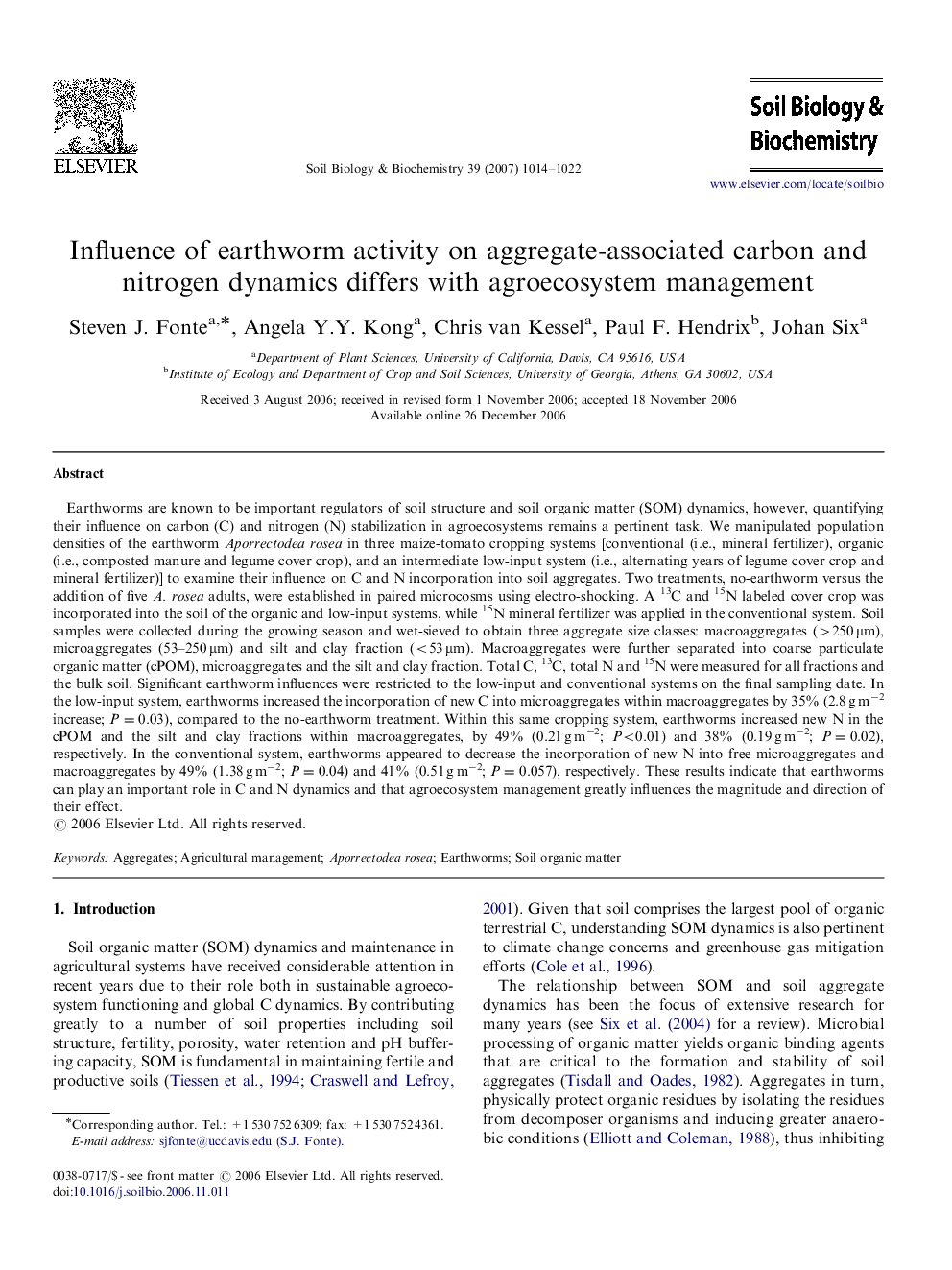| Article ID | Journal | Published Year | Pages | File Type |
|---|---|---|---|---|
| 2026408 | Soil Biology and Biochemistry | 2007 | 9 Pages |
Earthworms are known to be important regulators of soil structure and soil organic matter (SOM) dynamics, however, quantifying their influence on carbon (C) and nitrogen (N) stabilization in agroecosystems remains a pertinent task. We manipulated population densities of the earthworm Aporrectodea rosea in three maize-tomato cropping systems [conventional (i.e., mineral fertilizer), organic (i.e., composted manure and legume cover crop), and an intermediate low-input system (i.e., alternating years of legume cover crop and mineral fertilizer)] to examine their influence on C and N incorporation into soil aggregates. Two treatments, no-earthworm versus the addition of five A. rosea adults, were established in paired microcosms using electro-shocking. A 13C and 15N labeled cover crop was incorporated into the soil of the organic and low-input systems, while 15N mineral fertilizer was applied in the conventional system. Soil samples were collected during the growing season and wet-sieved to obtain three aggregate size classes: macroaggregates (>250 μm), microaggregates (53–250 μm) and silt and clay fraction (<53 μm). Macroaggregates were further separated into coarse particulate organic matter (cPOM), microaggregates and the silt and clay fraction. Total C, 13C, total N and 15N were measured for all fractions and the bulk soil. Significant earthworm influences were restricted to the low-input and conventional systems on the final sampling date. In the low-input system, earthworms increased the incorporation of new C into microaggregates within macroaggregates by 35% (2.8 g m−2 increase; P=0.03), compared to the no-earthworm treatment. Within this same cropping system, earthworms increased new N in the cPOM and the silt and clay fractions within macroaggregates, by 49% (0.21 g m−2; P<0.01) and 38% (0.19 g m−2; P=0.02), respectively. In the conventional system, earthworms appeared to decrease the incorporation of new N into free microaggregates and macroaggregates by 49% (1.38 g m−2; P=0.04) and 41% (0.51 g m−2; P=0.057), respectively. These results indicate that earthworms can play an important role in C and N dynamics and that agroecosystem management greatly influences the magnitude and direction of their effect.
